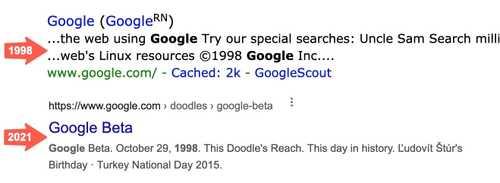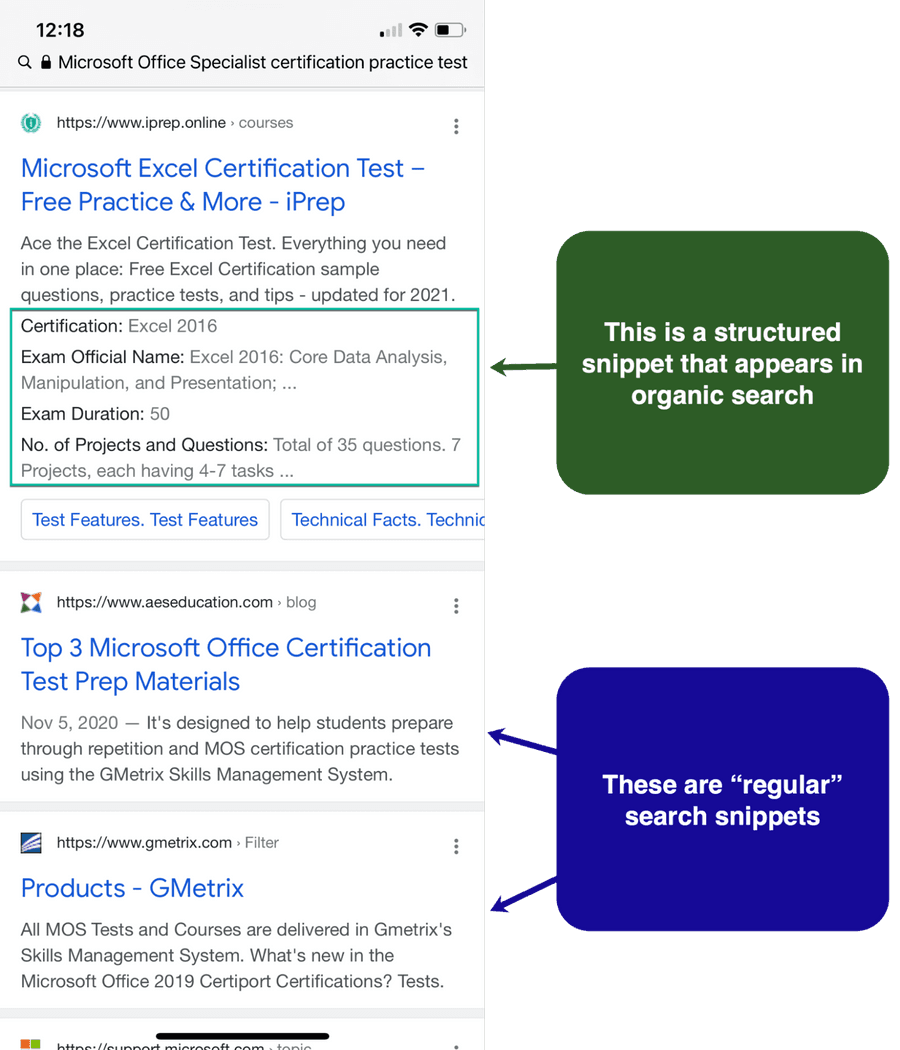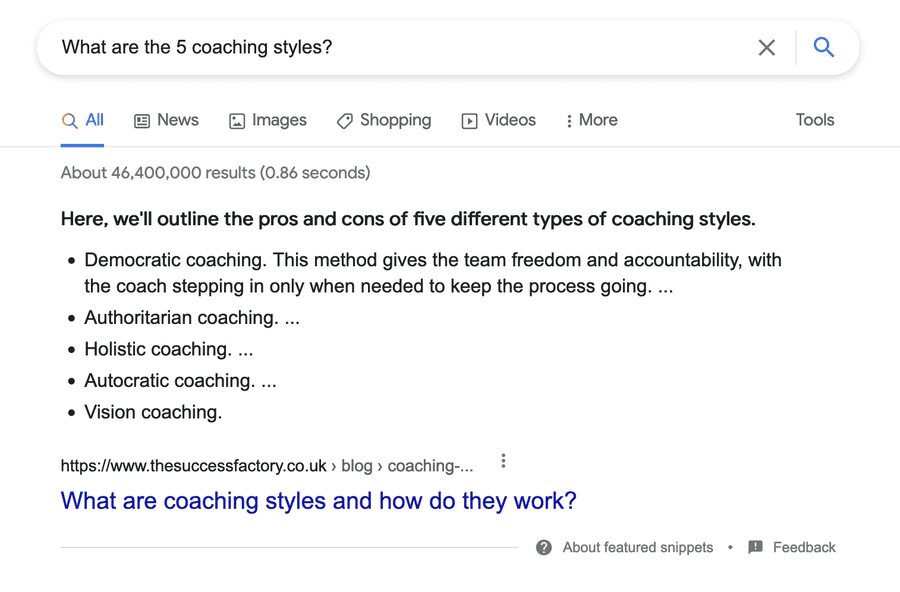Explore the World's Best Ideas
Join today and uncover 100+ curated journeys from 50+ topics. Unlock access to our mobile app with extensive features.
The anatomy of a standard search snippet
The anatomy of a standard search snippet
The standard Google search snippet has changed over the years, but in essence all the key elements are still there:
- The clickable title or headline of the snippet (in blue)
- The description of that page (about two lines long)
- The URL path (used to be in green, now it is black)
- On a mobile device, there’s also a tiny logo next to the URL (Google will use your site favicon when deciding which image to show next to your URL.)
3
5 reads
URL path
These days, Google will do its best to show the meaningful URL path (almost like a breadcrumb) instead of simply the URL of the page. This consists of:
- The domain: Domain name may impact clickthrough (if you do a particularly good job picking a snappy domain name that intrigues) & you do have full control over this part of the snippet.
- The breadcrumb or the truncated URL: You can use breadcrumb schema to force Google to use breadcrumb instead of the URL, & watch your Search Console to see if that helped clickthrough.
3
6 reads
Title
Google used to rely on the page title to generate the title of the search snippet, but it has been rewriting that part more and more often recently.
That being said, it is still recommended to optimize your title to include keywords and entice more clicks — and hope Google will keep it intact.
3
5 reads
Description
Google has been generating the search snippet description for years without using the associated meta description: recent studies show that Google ignores meta descriptions in about 70% of cases.
You may still want to create meta descriptions in case Google needs some clues, but expect them to figure this part out on their own.
Another way to try and trick Google into using your chosen snippet description is to create concise summaries of the content and add it at the beginning of the article.
3
3 reads
Rich snippets for content-based pages
Rich snippets are search snippets enhanced with some additional details. Web publishers can control rich snippets by adding schema markup, so they are thus under website owners’ control.
FAQ
HowTo schema
Video schema
3
7 reads
Structured snippets
Structured snippets are less popular than rich snippets, even though they are very common on search.
Structured snippets import tabular data to formulate a more informative search snippet.
All it takes to qualify for this type of a snippet is to create an HTML table. It is a good idea to use tables for summaries, feature comparisons, lists, etc.
3
3 reads
Image thumbnails
Image thumbnails are very rare on desktop. Yet on mobile devices, images show up inside most search snippets.
- Make sure there’s at least one image on your landing page.
- Compress your image to make it load faster.
- Specify the thumbnail using the meta tag.
3
6 reads
Dates
Dates in search snippets are important clickthrough factors.
- People may click on a search snippet with a more recent date.
- They can scroll past an older date even when the page ranks higher.
Google has clear guidelines as to how publishers can keep dates fresh:
- Don’t hide dates, they are useful
- When updating a piece, re-publish it on a new date only when you’ve rewritten it - don’t redirect, better to update the old piece & change the publish date
- Include “Updated on” on top of the article if you updated it
- Using schema “datePublished” & “dateModified” is not reqd. but will be helpful
3
1 read
Mini sitelinks
Mini sitelinks are probably the most unpredictable element of a search snippet. Google may randomly pick links from navigation, tag, or category links, etc. There’s also no way to tell Google they made a poor choice.
They can be generated for just about any result out there.
Mini sitelinks represent a very useful feature, because they increase your odds that your search snippet will get a click (by adding more clickable links to your snippet).
To increase your chances that Google will show mini sitelinks in your search snippet use an on-page table of contents (through HTML anchor tags).
3
2 reads
Featured snippets
Featured snippets were officially considered the #1 organic result (previously they were “position zero” — appearing before the top organic result).
3
9 reads
IDEAS CURATED BY
Digital Marketer Welcome to my Deepstash where I share ideas I find most valuable for those who wish learn more about digital marketing!
CURATOR'S NOTE
Google search result pages are becoming more diverse and even interactive. How much control do writers and content creators have over how their content is represented in search? As it turns out, they do have quite a few options when it comes to optimizing their search snippets!
“
Madhav 's ideas are part of this journey:
Learn more about marketingandsales with this collection
How to develop a growth mindset
How to think creatively and outside the box
How to embrace change
Related collections
Similar ideas
5 ideas
9 ideas
6 ideas
Read & Learn
20x Faster
without
deepstash
with
deepstash
with
deepstash
Personalized microlearning
—
100+ Learning Journeys
—
Access to 200,000+ ideas
—
Access to the mobile app
—
Unlimited idea saving
—
—
Unlimited history
—
—
Unlimited listening to ideas
—
—
Downloading & offline access
—
—
Supercharge your mind with one idea per day
Enter your email and spend 1 minute every day to learn something new.
I agree to receive email updates





